Related Research Articles

A dog breed is a particular strain of dog that was purposefully bred by humans to perform specific tasks, such as herding, hunting, and guarding. Dogs are the most variable mammal on earth, with artificial selection producing around 450 globally recognized breeds. These breeds possess distinct traits related to morphology, which include body size, skull shape, tail phenotype, fur type, body shape, and coat colour. Their behavioural traits include guarding, herding, and hunting, and personality traits such as hypersocial behavior, boldness, and aggression. Most breeds were derived from small numbers of founders within the last 200 years. As a result, today dogs are the most abundant carnivore species and are dispersed around the world.

The American Kennel Club (AKC) is a registry of purebred dog pedigrees in the United States. In addition to maintaining its pedigree registry, this kennel club also promotes and sanctions events for purebred dogs, including the Westminster Kennel Club Dog Show, an annual event which predates the official forming of the AKC, the National Dog Show and the AKC National Championship. The AKC is a non-member partner with the Fédération Cynologique Internationale.

The Welsh Corgi is a small type of herding dog that originated in Wales. The name "corgi" is derived from the Welsh words "cor" and "ci", meaning "dwarf" and "dog", respectively.

The Boxer is a medium to large, short-haired breed of dog, developed in Germany. The coat is smooth and tight-fitting; colors are fawn, brindled, or white, with or without white markings. Boxers are brachycephalic, have a square muzzle, mandibular prognathism, very strong jaws, and a powerful bite ideal for hanging on to large prey. The Boxer was bred from the Old English Bulldog and the now extinct Bullenbeisser, which became extinct by crossbreeding rather than by a decadence of the breed. The Boxer is a member of both The Kennel Club and American Kennel Club (AKC) Working Group.
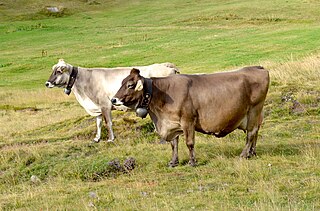
A breed is a specific group of domestic animals having homogeneous appearance (phenotype), homogeneous behavior, and/or other characteristics that distinguish it from other organisms of the same species. In literature, there exist several slightly deviating definitions. Breeds are formed through genetic isolation and either natural adaptation to the environment or selective breeding, or a combination of the two. Despite the centrality of the idea of "breeds" to animal husbandry and agriculture, no single, scientifically accepted definition of the term exists. It was shown by set-theoretic means that for the term breed an infinite number of different definitions, which more or less meet the common requirements found in literature, can be given. A breed is therefore not an objective or biologically verifiable classification but is instead a term of art amongst groups of breeders who share a consensus around what qualities make some members of a given species members of a nameable subset.

The Chinook is a breed of sled dog, developed in the state of New Hampshire during the early 20th century. The Chinook is New Hampshire's official state dog.

The Australian National Kennel Council (ANKC) is the coordinating kennel club of Australia. The ANKC is a member of the Fédération Cynologique Internationale.
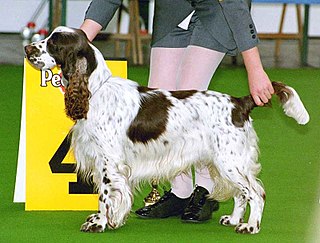
A dog show is an event where dogs are exhibited. A conformation show, also referred to as a breed show, is a kind of dog show in which a judge, familiar with a specific dog breed, evaluates individual purebred dogs for how well the dogs conform to the established breed type for their breed, as described in a breed's individual breed standard.
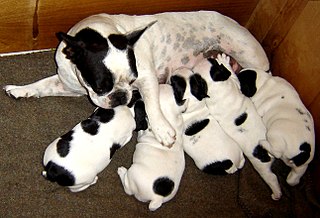
Dog breeding is the practice of mating selected dogs with the intention of maintaining or producing specific qualities and characteristics. When dogs reproduce without such human intervention, their offspring's characteristics are determined by natural selection, while "dog breeding" refers specifically to the artificial selection of dogs, in which dogs are intentionally bred by their owners. Breeding relies on the science of genetics, hence a breeder who is knowledgeable on canine genetics, health, and the intended purpose of the dogs attempts to breed suitable dogs.

A Goldendoodle, also known as the Groodle, is bred from a Golden Retriever and a Poodle. First widely bred in 1990s, the crossbreed is bred in three different size varieties corresponding to the size variety of Poodle used as a parent.
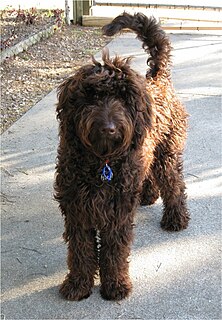
A Labradoodle is a crossbreed dog created by crossing the Labrador Retriever and the Standard, Miniature, or Toy poodle. The term first appeared in 1955, but was not initially popular. Labradoodles are considered a good choice for people with canine dander allergies, since some have the same hypoallergenic coat as their poodle ancestors.
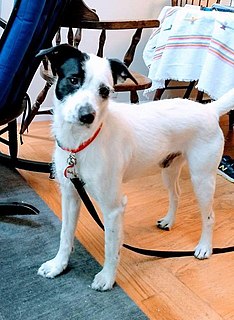
A mongrel, mutt or mixed-breed dog is a dog that does not belong to one officially recognized breed and including those that are the result of intentional breeding. Although the term mixed-breed dog is sometimes preferred, many mongrels have no known purebred ancestors. Crossbreed dogs, and "designer dogs", while also a mix of breeds, differ from mongrels in being intentionally bred. At other times, the word mongrel has been applied to informally purpose-bred dogs such as curs, which were created at least in part from mongrels, especially if the breed is not officially recognized.
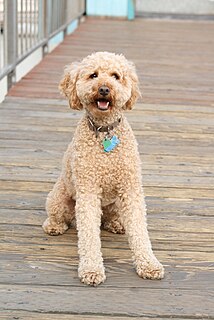
Dog crossbreeds, sometimes called designer dogs, are dogs which have been intentionally bred from two or more recognized dog breeds. They are not dogs with no purebred ancestors, but are not otherwise recognised as breeds in their own right, and do not necessarily breed true.
Purebreds are "cultivated varieties" of an animal species achieved through the process of selective breeding. When the lineage of a purebred animal is recorded, that animal is said to be "pedigreed". Purebreds breed true-to-type which means the progeny of like-to-like purebred parents will carry the same phenotype, or observable characteristics of the parents.

A crossbreed is an organism with purebred parents of two different breeds, varieties, or populations. Crossbreeding, sometimes called "designer crossbreeding", is the process of breeding such an organism, While crossbreeding is used to maintain health and viability of organisms, irresponsible crossbreeding can also produce organisms of inferior quality or dilute a purebred gene pool to the point of extinction of a given breed of organism.
A breed registry, also known as a herdbook, studbook or register, in animal husbandry and the hobby of animal fancy, is an official list of animals within a specific breed whose parents are known. Animals are usually registered by their breeders while they are young. The terms studbook and register are also used to refer to lists of male animals "standing at stud", that is, those animals actively breeding, as opposed to every known specimen of that breed. Such registries usually issue certificates for each recorded animal, called a pedigree, pedigreed animal documentation, or most commonly, an animal's "papers". Registration papers may consist of a simple certificate or a listing of ancestors in the animal's background, sometimes with a chart showing the lineage.
In agriculture and in the hobby of animal fancy, a breeder is an individual animal used for selective breeding. A breeder is usually a purebred animal, bred with the intent of producing purebred, or even show-quality animals. However, in some cases, a breeding animal is crossbred with another breed or a mixed breed with the intent of combining aspects of two or more different breeds.

Pedigree Dogs Exposed is a BBC One investigative documentary, produced by Jemima Harrison, which looks into health and welfare issues facing pedigree dogs in the United Kingdom. It was originally broadcast on 19 August 2008.

The popular sire effect occurs when an animal with desirable attributes is bred repeatedly. In dog breeding, a male dog that wins respected competitions becomes highly sought after, as breeders believe the sire possesses the genes necessary to produce champions. The popular sire is often bred extensively with many females. This can cause undetected, undesirable genetic traits in the stud to spread rapidly within the gene pool. It can also reduce genetic diversity by the exclusion of other males.
Pedigree Dogs Exposed: Three Years On is a 2012 follow-up to the 2008 BBC One documentary, Pedigree Dogs Exposed (PDE). While this second programme looks at the positive changes made since the original film, it focuses on investigating areas of continuing concern. The programme concluded that it was time to call a halt to suffering created by breeders. It states that as long as the Kennel Club (KC) tolerated human whim leading to dogs that cannot run, breathe, or see freely, dogs would continue to suffer, but featured that, in fact, the Kennel Club would continue in the vein, suggesting that the organisation has a conflict of interest in juggling its commitments to breeders and to dogs – when the interest of dogs does not match up with that of breeders, the dogs suffer. It also called on dog fanciers to stop being consumers of 'freak-show" appearance, the driving factor in developing dogs to physical extremes. KC refused to participate in the production. The programme aired on 27 February 2012 in the United Kingdom.
References
- ↑ "A Guide to Breeding Your Dog" (PDF). American Kennel Club. 2007. Retrieved 2 December 2011.
- ↑ Gillespie, James R.; Frank B. Flanders (2009). Modern Livestock and Poultry Production. Cengage Learning. p. 235. ISBN 9781428318083.
- ↑ "A Guide to Breeding Your Dog" (PDF). American Kennel Club. 2007. Retrieved 2 December 2011.
- ↑ Derry, Margaret E. (2003). Bred for Perfection. JHU Press. p. 198. ISBN 9780801873447.
- ↑ Derry, Margaret E. (2003). Bred for Perfection. JHU Press. p. 198. ISBN 9780801873447.
- ↑ Beauchamp, Richard G. (2011). Breeding Dogs for Dummies. John Wiley & Sons. ISBN 9781118068632.
- ↑ Beauchamp, Richard G. (2011). Breeding Dogs for Dummies. John Wiley & Sons. ISBN 9781118068632.
- ↑ Miklósi, Adam (2008). Dog behaviour : evolution and cognition (Repr. ed.). Oxford: Oxford University Press. ISBN 978-0-19-954566-7.
- ↑ Mann, Avery. "Dog Breeds 101". Archived from the original on 27 November 2011. Retrieved 15 December 2011.
- ↑ "A Guide to Breeding Your Dog" (PDF). American Kennel Club. 2007. Retrieved 2 December 2011.
- ↑ Gillespie, James R.; Frank B. Flanders (2009). Modern Livestock and Poultry Production. Cengage Learning. p. 236. ISBN 9781428318083.
- ↑ Taylor, Robert Ellis; Thomas Gordon Field (2004). Scientific farm animal production: an introduction to animal science. Pearson/Prentice Hall. ISBN 9780130481702.
- ↑ "A Guide to Breeding Your Dog" (PDF). American Kennel Club. 2007. Retrieved 2 December 2011.